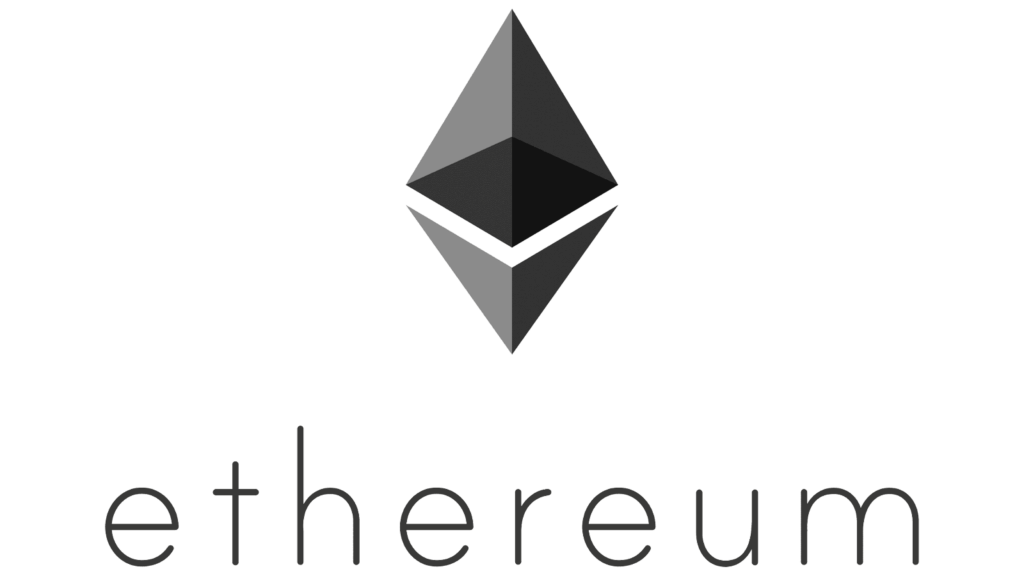The backbone of the ever-evolving blockchain space is consensus mechanisms. Among these, two giants dominate the landscape: Proof of Work and Proof of Stake. Understanding the nuances of PoW and PoS is critical as a cryptocurrency advisor navigating this digital frontier.
PoW: The Trailblazer
In the fascinating realm of blockchain, there’s a trailblazer called Proof of Work (PoW), a brainchild of the enigmatic Satoshi Nakamoto marking the genesis of Bitcoin. Picture this: miners, the unsung heroes of this digital frontier, tackling complex cryptographic puzzles to give a nod to transactions and fortify the network’s security.
PoW isn’t just a mere puzzle-solving quest; it’s the backbone that champions a decentralized utopia. Is it magic? The relentless computational prowess needed for validating transactions. This very resilience stands guard, warding off potential threats and ensuring a robust, decentralized system. It’s like a digital fortress where only the most dedicated and powerful can validate the truth within the blockchain.
Imagine it as a game, where miners flex their computational muscles, competing to be the first to crack the code and etch transactions into the immutable ledger. The stakes are high, the competition fierce, but this very process is what knits the fabric of trust in this decentralized world. It’s a symphony of bits and bytes choreographed to create a tapestry of security and decentralization.
PoS: The Game Changer
In the mesmerizing dance of blockchain innovation, behold Proof of Stake (PoS), a captivating departure from the traditional PoW landscape. Here, it’s not about miners flexing computational muscles; it’s about a different league altogether:
- Imagine a league where validators, the heroes of this narrative, aren’t battling with processing power but rather flaunting their coin collections. Yes, it’s about those who are willing to stake their precious coins, locking them up as a pledge of allegiance. These chosen ones—validators—are entrusted with crafting new blocks and giving a nod to transactions, all based on the weight of their stake;
- But wait, there’s more! PoS isn’t just a game-changer; it’s a sustainability maestro. It sweeps in with its eco-friendly cape, addressing the energy guzzling woes of PoW. It’s the greener, more cost-effective alternative, turning heads with its environmental charm.
Now, here’s the twist: the brilliance of PoS isn’t just in its efficiency; it’s in its incentives. Validators have skin in the game—a stake they risk if they dare to dance with malice. It’s a system that nudges stakeholders to align their interests with the network’s well-being, ensuring they play by the rules or face the consequences.
Exploring the Clash
Proof of Work and Proof of Stake are two prominent consensus mechanisms in blockchain with several key differences:
| Aspect | Proof of Work | Proof of Stake |
|---|---|---|
| Validation Process | Miners solve complex puzzles using computational power. | Validators create blocks based on staked coins. |
| Energy Efficiency | High energy consumption due to mining operations. | Lower energy usage as it doesn’t rely on mining. |
| Security | Robust security due to computational work. | Security based on validators’ economic stake. |
| Decentralization | Initially decentralized but concerns about centralization. | Potential centralization due to stake influence. |
| Incentivization | Miners are rewarded with coins and transaction fees. | Validators rewarded with fees for validating. |
| Scalability | Limited scalability due to consensus through mining. | Potentially better scalability with stacked coins. |
Both mechanisms have their strengths and weaknesses, and the choice between PoW and PoS often depends on the specific goals, priorities, and context of a blockchain project. Some blockchains even employ hybrid models or variations to address limitations and enhance performance.
Bonus – (PDF) On transition between PoW and PoS
Is Bitcoin a PoS or PoW?

Bitcoin, the pioneering cryptocurrency, employs a Proof of Work consensus mechanism as part of its underlying technology. Here are some key aspects of how PoW functions within the Bitcoin network:
- Mining and Validation Bitcoin transactions are grouped into blocks, and miners compete to solve complex cryptographic puzzles using computational power. These puzzles, known as “hash functions,” require significant computational work to find a specific output, which validates and secures the block. Miners verify transactions by bundling them into blocks and adding them to the blockchain;
- Block Rewards and Difficulty Adjustment. Once a miner successfully solves a puzzle and validates a block, they are rewarded with newly minted bitcoins, known as the block reward, along with any transaction fees associated with the transactions in that block. The difficulty of these puzzles is adjusted regularly to maintain a consistent block creation rate, aiming for approximately one block every 10 minutes;
- Security and Network Consensus. The PoW mechanism in Bitcoin provides a robust level of security. To alter any transaction within the blockchain, an attacker would need to control a majority of the network’s computational power, known as a 51% attack, which becomes increasingly challenging and economically unfeasible as the network grows;
- Energy Consumption. One of the most discussed aspects of PoW, particularly in the case of Bitcoin, is its energy consumption. Mining operations require significant computational power, leading to substantial electricity consumption. This has sparked debates about the environmental impact of Bitcoin mining and initiatives to explore more energy-efficient consensus mechanisms;
- Evolution and Challenges. As Bitcoin’s popularity has grown, challenges related to scalability, energy efficiency, and environmental concerns have surfaced. Various proposals, including layer-2 solutions like the Lightning Network and discussions around potential protocol upgrades, aim to address these challenges without compromising the network’s security or decentralization;
- PoW’s Significance. Despite its criticisms, PoW remains a fundamental part of Bitcoin’s architecture, contributing to its security and immutability. The competition among miners, the decentralized nature of the network, and the consensus mechanism’s reliability have solidified Bitcoin’s position as a robust and pioneering cryptocurrency.
Bitcoin’s PoW consensus mechanism laid the groundwork for numerous other blockchain projects and cryptocurrencies, serving as a cornerstone in the development and understanding of decentralized digital currencies.
Is Ethereum a PoS or PoW?

Ethereum, historically a Proof of Work blockchain, has been in the process of transitioning to a Proof of Stake consensus mechanism. As of my last update in January 2022, Ethereum’s transition from PoW to PoS was underway but not yet fully implemented.
- Ethereum’s Proof of Work Phase. In its initial stages, Ethereum, much like Bitcoin, relied on PoW for transaction validation and block creation. Miners competed to solve complex mathematical puzzles using computational power, receiving rewards in Ether (ETH) for verifying transactions and securing the network;
- Ethereum’s Transition to Proof of Stake/. Ethereum’s shift to PoS is part of an upgrade known as Ethereum 2.0 or Eth2. This upgrade aims to address scalability, energy efficiency, and network security concerns. The PoS mechanism, called the Beacon Chain, introduces validators who are chosen to propose and validate blocks based on the amount of Ether they are willing to stake as collateral;
- Beacon Chain and Validators. Validators in Ethereum 2.0 put up a certain amount of Ether as a stake to participate in block creation and validation. Validators are chosen to propose blocks and attest to their validity by locking up their Ether as a guarantee. This new consensus model is expected to significantly reduce energy consumption compared to PoW;
- Phased Implementation. Ethereum’s transition to Eth2 involves multiple phases. The Beacon Chain, introduced as the initial phase, has been operational, but the full migration from PoW to PoS, where the current Ethereum mainnet transitions entirely to the new consensus mechanism, was a gradual process expected to take place over several planned upgrades.
Please note that developments might have occurred since my last update, so it’s advisable to check the latest Ethereum updates or sources for the most recent information regarding Ethereum’s consensus mechanism.
Is Polkadot a PoS or PoW?

Polkadot utilizes a Proof of Stake consensus mechanism as its underlying protocol. Unlike Proof of Work , which relies on miners expending computational resources to validate transactions and create new blocks, Polkadot’s PoS model involves validators staking their tokens to secure the network and validate transactions:
- Validators: In Polkadot’s PoS system, validators are responsible for proposing and validating new blocks. They are selected based on the amount of DOT tokens they are willing to “stake” or lock up as collateral;
- Staking and Consensus: Validators in Polkadot are incentivized to behave honestly and follow the protocol rules. If they attempt malicious actions, such as validating incorrect transactions, they risk losing a portion or all of their staked tokens;
- Nominated Proof of Stake (NPoS): Polkadot also implements a Nominated Proof of Stake mechanism, where DOT holders who don’t have the necessary technical resources or stake amount to become validators can nominate trustworthy validators to represent their interests;
- Governance and Security: This PoS model aims to enhance scalability, reduce energy consumption, and improve the network’s security by aligning the incentives of participants with the health and security of the network.
Polkadot’s design focuses on interoperability, allowing multiple blockchains (referred to as parachains and parathreads) to connect and communicate with each other. The PoS consensus mechanism contributes to securing this multi-chain network, ensuring consensus and interoperability among the different chains within the Polkadot ecosystem.
Overall, Polkadot’s utilization of PoS aims to create a scalable, interoperable, and secure network while promoting token holder participation through staking mechanisms. This approach is aligned with the broader trend in blockchain networks toward more energy-efficient and scalable consensus mechanisms like PoS.
The Future Horizon
The evolution of blockchain consensus mechanisms doesn’t halt at PoW or PoS. Hybrid models and novel approaches like Proof of Burn, Proof of Capacity, and Delegated Proof of Stake are emerging, each aiming to address the limitations while enhancing scalability, security, and sustainability.
As a cryptocurrency consultant, embracing this evolution empowers you to guide clients towards more efficient and effective blockchain solutions. The ability to analyze, assess, and recommend the most suitable consensus mechanism becomes a crucial skill set in this landscape of continual innovation.
Conclusion
In the blockchain universe, PoW and PoS stand as pillars, shaping the foundation of consensus mechanisms. Understanding their strengths, weaknesses, and evolutionary trajectories becomes quintessential for anyone traversing the cryptocurrency consultancy realm.
The journey doesn’t end here; it evolves, much like blockchain itself. Stay curious, stay adaptive, and embrace the ever-unfolding possibilities of PoW, PoS, and the intricate world of blockchain. Remember, in this realm, knowledge isn’t just power—it’s the cornerstone of innovation.